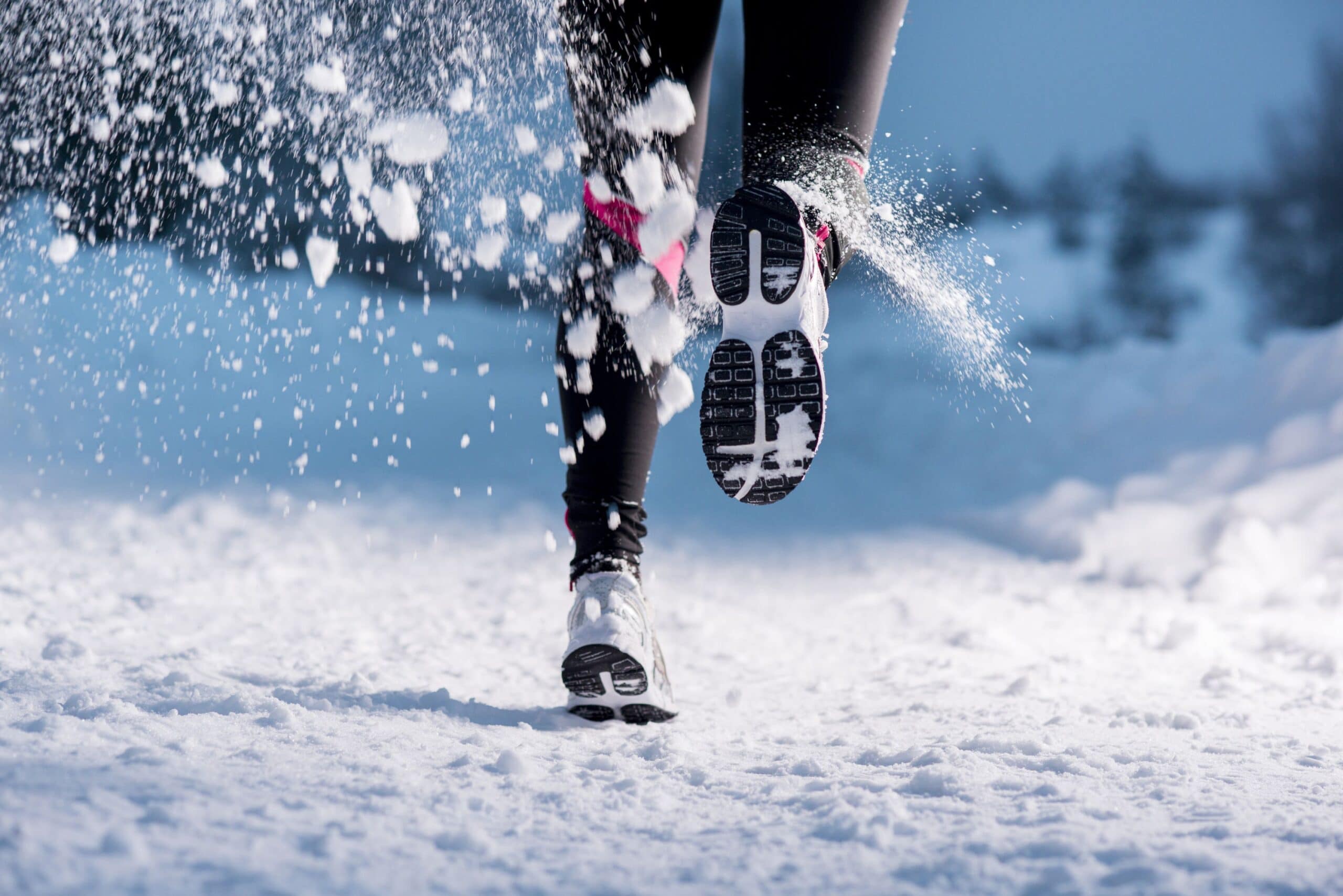Never have we needed the outdoors more, and rarely has it been less appealing, but – with lots of caution and planning – you may not need to hang up your running shoes just because of a little snow and slush.
Here’s what you need to know about running in the snow, from what to wear to where to go…
Stay alert
Running in snow is OK, says Chloe Twist, personal trainer at Origym, “so long as you’re aware of the dangers”. Ice is your number one nemesis, and keeping your eyes on the road is essential for catching potentially dangerous patches.

“Remember to take it slow while applying more focus than usual to where you’re stepping,” advises Twist. “If you do encounter ice, walk where possible, and be sure to keep your feet as close to the ground as you can.”
Remember also that a thin layer of powder can conceal slippery ice beneath, while deep snow presents challenges of its own.
“If you encounter deep snow,” says Twist, “you should keep your speed slow, your knees high, and your strides short, to help provide you with more stability. You might find it helpful to avoid listening to music so you’re able to focus on each stride.”
9 inches of snow, feels like 19, man running in shorts. I love chicago. pic.twitter.com/0WgYQ1LujD
— Lindsay Knight (@lindsayknight) January 31, 2021
Running through deep snow is also extremely energy-sapping, and for novice winter runners is probably best avoided altogether.
Map out your route
They say you should always look before you leap, and you should definitely look before pounding a frozen road and sliding headlong into a parked car.
Smooth-surfaced pavements are particularly treacherous when frozen over, while trails, paths and parks are often safer, less slippery alternatives.
“If you do choose to run on pavements,” says Twist, “wear high visibility clothing and even some running lights, to ensure you are visible to traffic and pedestrians just in case you slip and fall.”
Running through the snow. It was cold, slippery and white all the way. pic.twitter.com/0BHeV2JXD8
— Prashant (@fitindiandad) January 28, 2021
Consider what time of day you choose to go running. After work and after dark may be more convenient, but you can’t avoid treacherous ice you can’t see.
Dress sensibly
It’s tempting to assume that wrapping up warm doesn’t apply to a red-faced runner whose body temperatures will soar regardless – but there’s a difference between how hot you feel and how hot you are.
“Start with your head and neck, since that’s where most of your body heat will escape from,” says Twist. “A lightweight, thermal hat is a good choice, but avoid regular scarves in favour of a bandana or neck gaiter to keep your neck from being exposed.”
“For your lower body,” she continues, “running tights are the perfect choice, as synthetic materials far surpass cotton when it comes to keeping your body insulated and moisture-free. That goes for socks too, as it’s incredibly important to protect your extremities when running in snow.”

Twist suggests layering on your upper body – “a synthetic base layer and fleece topped with a high-quality windproof jacket is perfect” – alongside moisture-wicking gloves or mittens.
Footwear is especially important for grip, comfort and balance. “Your running shoes should be sufficiently waterproof to keep your feet dry – the only way to keep warm in extreme weather. Avoid shoes with mesh sides.”





